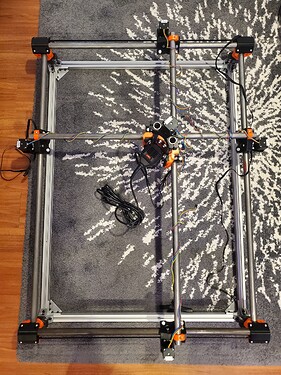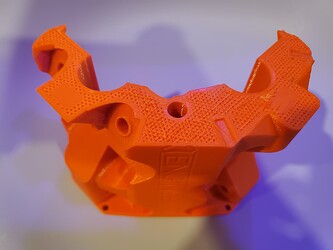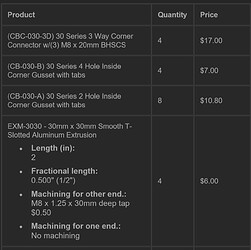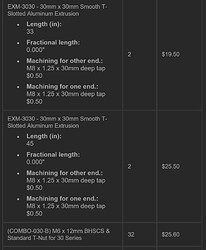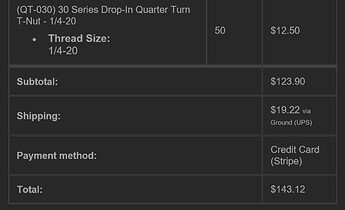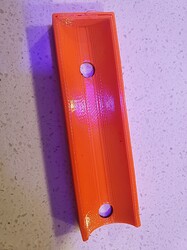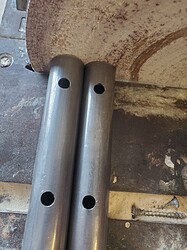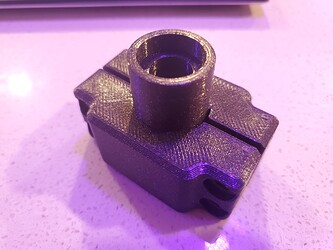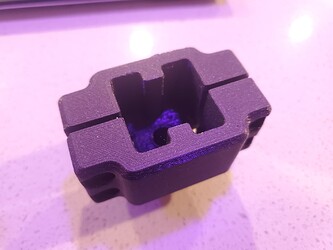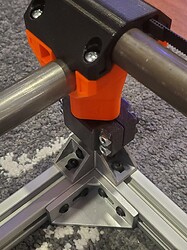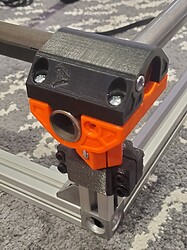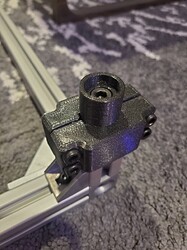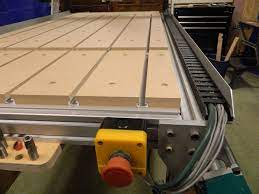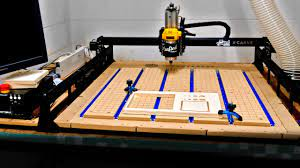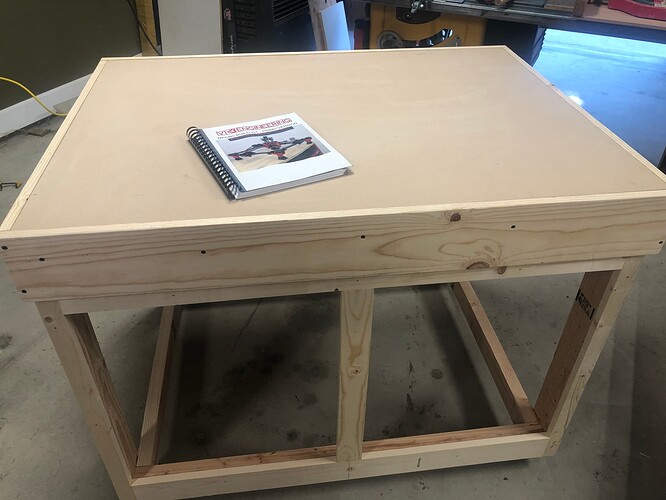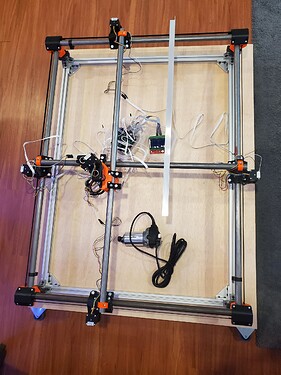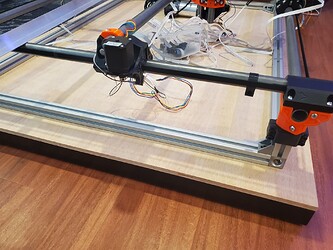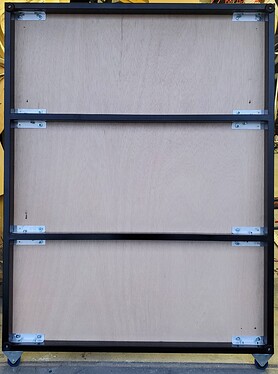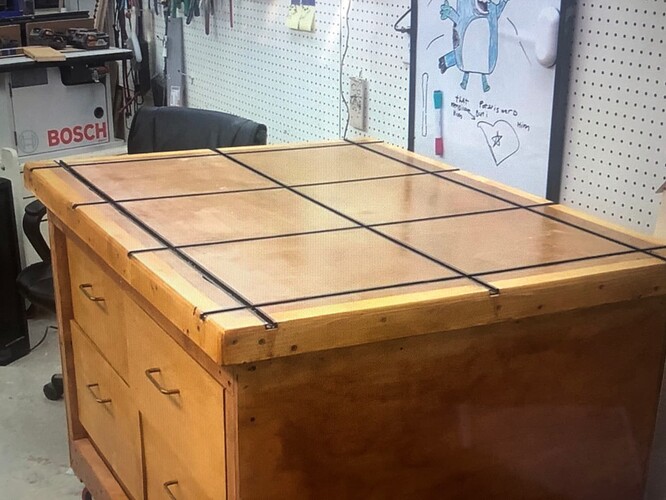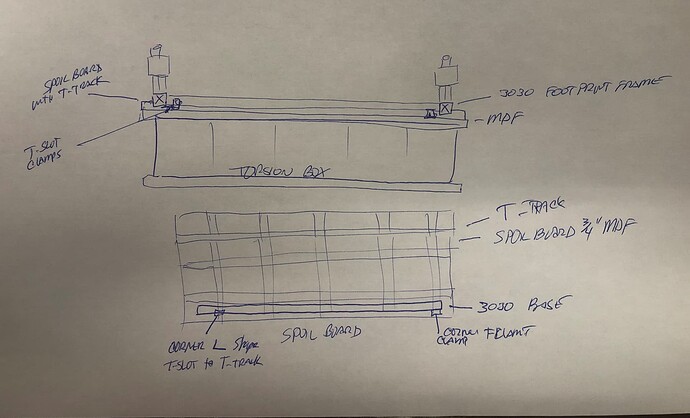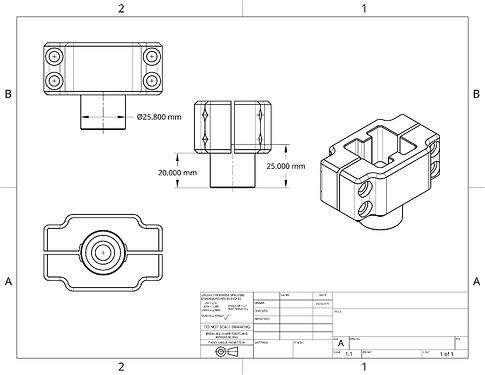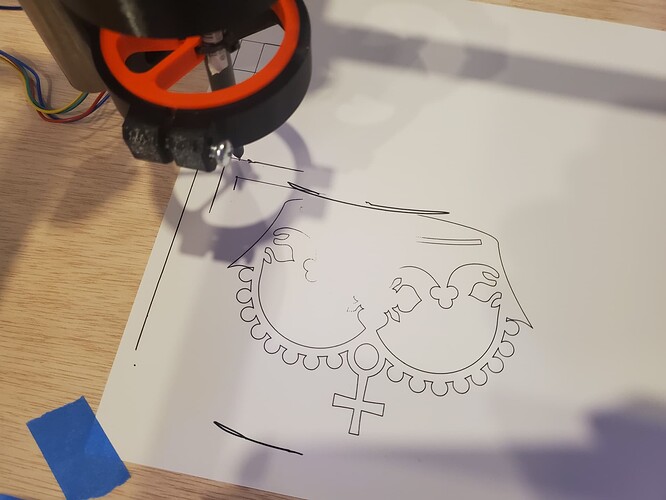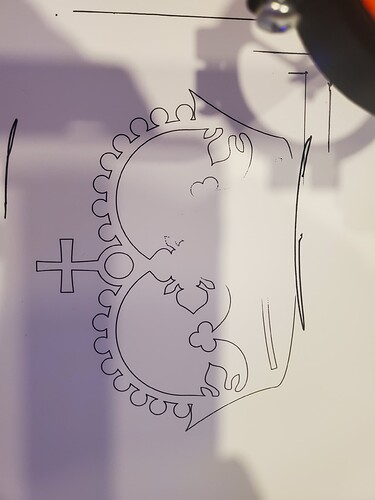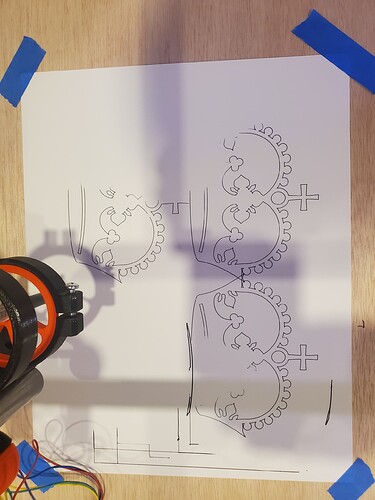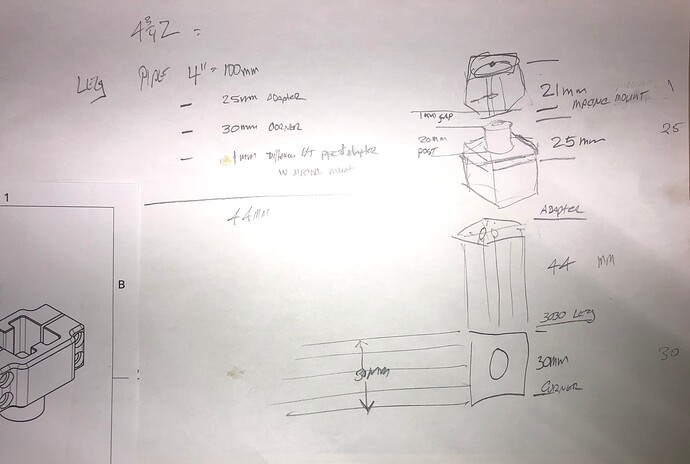Finally got around to start building my Primo this week, after almost a year of no progress. I live in an apartment but will be operating my Primo elsewhere so I knew I had to make it as portable as possible so it can be transported back and forth between locations. For this reason I decided to build a base frame out of 3030 aluminum extrusions like some others have done. Benefits are increased rigidity for transport as well as ease of assembly because there is no need to accurately cut the 4 legs to the same exact length or screw down the feet in the exact right spot.
All my parts are printed in PETG, I spent a little extra on filament because I wanted the Primo to match my Prusa and of course my core print failed at 85% 
The reason for the failure is that the orange PM brand (Prusa’s old supplier) filament was wound too well around it’s spool and would unwind itself slowly until the loose filament got caught on my skate bearing spool holder. When I was new to printing I thought the skate bearing spool holder was a good idea but in practice a basic spool holder is best, the small amount of friction is necessary to keep it from unraveling. I ended up having to buy a spool of orange Prusament to reprint and it was also wound too well. Learn from my mistake and keep it simple!
Sourcing the extrusions at a reasonable price is the main reason my build was delayed, besides laziness, of course  . I scoured the net and after much wasted time building out carts on various sites I learned out about tnutz.com on a Sprinter van conversion forum. Sourcing the cut-to-spec extrusions and fasteners/hardware from them was wayyyyyyyy cheaper than the more well known alternatives like 8020.net and much faster, no waiting on a four week lead time. Here is the invoice of what I ordered from tnutz for $143.12 total:
. I scoured the net and after much wasted time building out carts on various sites I learned out about tnutz.com on a Sprinter van conversion forum. Sourcing the cut-to-spec extrusions and fasteners/hardware from them was wayyyyyyyy cheaper than the more well known alternatives like 8020.net and much faster, no waiting on a four week lead time. Here is the invoice of what I ordered from tnutz for $143.12 total:
See my previous post for where I sourced my DOM tubing at the best possible price: Where to buy D.O.M tubing? / PETG parts
Figuring out what lengths of extrusion to order was a bit confusing for me, I ended up ordering based on the table dimensions on the calculator, the outer dimensions of the feet. The result of this is that my build area is now slightly larger than 24in x 36in because the stock Primo feet are wider than the 30mm extrusion. The outer measurement of my extrusion base is 35.4in x 47.4in.
Even reviewing my notes now I’m not exactly sure how I arrived at these dimensions, luckily when I ordered the DOM tubing I ordered extra length on each cut. Not only were the cuts not very accurate or clean, but I was able to have enough extra length to make up for the new slightly larger dimensions. Only the x rails ended up being a few mm short. Additionally, it should be noted that tnutz only allows you to order cuts in specific fractional increments, another reason I ordered my extrusions up to a round inch (add 60mm for two 30mm corner connectors), 8020.net allows cuts down to the mm.
I think I speak for everyone, mixing Imperial and Metric in projects is so infuriating! 
I whipped up a simple jig for drilling the holes in the z-tubes (25.4in), it’s not actually very good for keeping the drill bit in place, but it is a quick and easy way to mark the holes on the tubes. I tried drilling my holes with a 5/16th (8mm) 135 deg drill bit without a center punch and they ended up a little wonky but I had no issues with assembly.
The only cuts I had to make were on these tubes, I used a tubing cutter which leaves a raised inner lip in the profile of the cutting wheel so I carefully removed that on the sanding disk before using the jig. You can download the stl here: PrusaPrinters
Adaptor for 3030 Aluminum Extrusion
There were a few adaptors floating around on the forum already but none of them were skookum enough for me  . I designed this adaptor for the 3030 legs so that the connection would be as strong as possible and I could assemble the rest of the Primo as normal. The part is designed to slide on the extrusion with no slop and uses four 6mm hex bolts to clamp down hard on the profile. Hard enough to make Ryan cringe! The hole on top takes an 8mm hex bolt and threads into the tapped extrusion, I think you could get away without this bolt if you had to, the clamping force from the other bolts is so strong I couldn’t pull it off with all my strength. You can download the stl here: PrusaPrinters
. I designed this adaptor for the 3030 legs so that the connection would be as strong as possible and I could assemble the rest of the Primo as normal. The part is designed to slide on the extrusion with no slop and uses four 6mm hex bolts to clamp down hard on the profile. Hard enough to make Ryan cringe! The hole on top takes an 8mm hex bolt and threads into the tapped extrusion, I think you could get away without this bolt if you had to, the clamping force from the other bolts is so strong I couldn’t pull it off with all my strength. You can download the stl here: PrusaPrinters
Next, I need to get the wiring figured out, I’m a little bit lost, there are no detailed instructions I could find on how to wire it up. I have a RAMBo v1.4 board and all the wiring that came with the Primo kit. I don’t remember ordering the endstop switches, but they are in the kit. I think I need to add the endstops to my build because I never got my gantries squared to within that 1mm threshold, but close. The endstops would help the steppers compensate for this? The whole squaring process was a bit confusing and frustrating, I may have to disassemble and redo that later.
I still need to read up more on the wiring but if anyone can point me in the right direction it would be appreciated!
